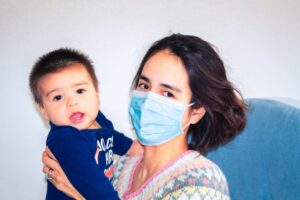On April 28th, the ILO celebrated the World Day for Safety and Health at Work, an annual international campaign to promote safe, healthy and decent work. Work accidents have a significant human, social and economic cost, which we should strive to eliminate by ensuring that all workplaces are safe and healthy.
In the context of the COVID-19 pandemic, occupational safety and health takes on even greater importance. This is why the theme of the 2020 World Day for Safety and Health at Work is Stop the pandemic: Safety and health at work can save lives. This campaign promotes the adoption of occupational safety and health measures in response to this pandemic aimed at preventing and mitigating health risks, including those arising from new working arrangements.
Despite the international commitment to occupational safety and health via the SDGs, work accidents are still far too common
A large share of the world’s population spends a great portion of their day at work, and we do so for a great portion of our lives. This means that our work environment and workplace have a strong impact on our living conditions, our well-being and that of our families.
Occupational safety and health is a core aspect of decent work, and as such, it should be universally guaranteed. Workers around the world should be able to feel safe in their workplaces, reassured that they are not exposed to undue risks.
The importance of occupational safety and health was recognized in the 2030 Agenda for Sustainable Development: target 8.8 of the agenda refers to the protection of labour rights and the promotion of safe and secure working environments for all workers, including migrant workers and those in precarious employment.
Yet, unfortunately, many workers around the world are exposed to undue risks in their workplaces and work accidents are still far too common.
In 12 countries out of the 90 with data available in ILOSTAT, there were more than 10 work-related fatalities per 100’000 workers during the data reference year. And in half of the countries with available data, the number of non-fatal injuries incurred by workers in connection to their work surpassed 890 per 100’000 workers.
Most work accidents are in male-dominated sectors such as construction, manufacturing, and transportation and storage
Strikingly, in almost all countries with data available, the number of occupational injuries per 100’000 workers was higher for men than for women, both for fatal and non-fatal injuries.
One possible explanation for this gender dimension of risk exposure could be the concentration or over-representation of male workers in the most unsafe sectors. This points to the need for appropriate regulations and targeted measures to minimize risk exposure and ensure the safest working environment possible for all workers, taking into account the specificities of each sector of activity.
Occupational injuries per 100'000 workers by sex
Latest year available
Indeed, looking at the distribution of occupational injuries by sector of activity, it becomes clear that some sectors are more dangerous than others for workers, at least in terms of the risk of being in a work accident.
In general terms, the sectors that seem to concentrate more fatal work accidents are manufacturing, construction, and transportation and storage. In fact, in over two thirds of countries with available data, each of these sectors is among the top three sectors in terms of the share of fatal occupational injuries. To a lesser (although still noteworthy) degree, work accidents also often arise from agricultural activities. In a little less than a quarter of all countries with data, agriculture appears among the top three sectors in terms of the share of fatal occupational injuries.
Furthermore, in 73 per cent of countries with data in ILOSTAT, the incidence rate of fatal occupational injuries was higher for migrant workers than for non-migrant workers (either EU or non-EU migrants in the case of EU countries). This suggests that migrant workers are more exposed to risks and hazards, which may be linked to the characteristics of the types of jobs they occupy. In order to ensure that no one is left behind, targeted measures are needed to promote and extend occupational safety and health to all workers.
The difficult albeit necessary monitoring of occupational diseases
Unlike occupational injuries, which result from a work accident, occupational diseases result from the prolonged exposure to risk factors arising from the work activity. Occupational diseases are hard to track, particularly given the possibly long lags between the exposure to risk factors and the manifestation of a disease.
Although ILOSTAT does not include statistics on occupational diseases, the ILO has been working closely in collaboration with the WHO to build reliable estimates to allow for their monitoring.
The current pandemic is reminding us all of the importance of occupational safety and health, and the dangers of exposure to undue health risks.
Author
-
Rosina Gammarano
Rosina is a Senior Labour Statistician in the Statistical Standards and Methods Unit of the ILO Department of Statistics. Passionate about addressing inequality and gender issues and using data to cast light on decent work deficits, she is a recurrent author of the ILOSTAT Blog and the Spotlight on Work Statistics. She has previous experience in the Data Production and Analysis Unit of the ILO Department of Statistics and the UN Resident Coordinator’s team in Mexico.












